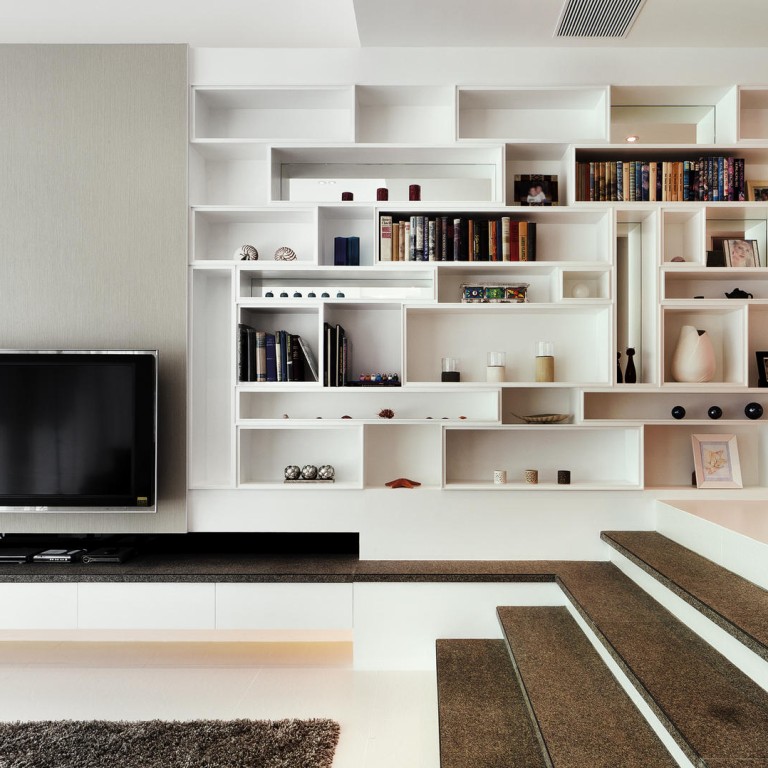
New | The art of constructing the perfect home library
The trick is to arrange shelving in a way that does not dominate the space, but leaves favourite books visible and accessible
Best-selling English novelist Joanna Trollope describes her e-book reader as "brilliant" - for travelling.
Overall, though, she sums up why she believes iPads and Kindles will never replace the printed page: "You can't love a library of e-books."
Books are cumbersome to cart around when moving house, and they stand front and centre of any clutter cull. But if you are a "book person", you can never completely let go. The trick is to arrange one's home library in a way that won't overwhelm the space, but leaves precious reads visible and accessible.
Australian architect Ben Milbourne came up with a "James Bond-inspired" solution for the inner-city home of eco-designer Leyla Acaroglu of Eco Innovators - a sustainably designed, full-wall rotating library.
"The split-level, open plan warehouse conversion in Melbourne's CBD needed a flexible solution to divide the open space into two rooms (living room and bedroom), while retaining the option of keeping the larger combined space when needed," explained Milbourne, founder of Bild Architecture.
In place of a conventional dividing wall, he designed six sections of floor-to-ceiling bookshelves, each rotating lazy-Susan style on an industrial-scale mechanism, which combine to form a 4.6 metre high by 3.8m wide rotating library wall. The system allows books to be stored and accessed from both sides, and also maximises air-flow and light, which Milbourne says is a "classic problem with studio apartments".
A collaboration with furniture designer David Waterworth of Against the Grain, who specialises in reclaimed and recycled materials, saw the design materialise in reclaimed plywood from construction site hoardings, complete with remnant posters and graffiti, which adds to the character.
The ply was sealed with natural beeswax, and the construction process minimised off-cut waste, appealing to the client's environmental sensibilities - although Milbourne adds that the design, the UnWaste Bookcase, could be replicated using other materials of the client's choice.
In Hong Kong, design and build firm SID custom made a wall of bookshelves to anchor the sunken living room and upper-level dining room of a split-level Yuen Long house, The Vineyard.
Designer Peter Ho, SID's chief director, said the clients enjoy hosting family gatherings, and also wanted to make a strong design statement in their tranquil villa.
"The big wall of custom-made shelving forms a centrepiece in the living area as well as providing useful display and storage," Ho said. For interest and function, the unit is divided into small spaces of different sizes and heights.
Painting the timber white allows it to remain understated yet make an impression. This home library becomes an expression of the owner's character - "calm but not dull", Ho said.
At a private apartment in Sha Tin, Louis Lau, design director at Ample Design, cribbed space from a solid internal wall to house the library of a client who loves books, but lacked the space to store them. The width of the concrete dividing wall allowed for a 250mm cavity to be dug out - enough width to hold a book - without compromising its structural integrity.
A black metal frame was fixed to the cavity, and locked to the ceiling via anchor bolts. Shelves were then crafted from plywood, and finished in timber veneer.
"The shelves are open to the bedroom behind, so books can be accessed from either side," Lau said. Here, the cavity extends below the bed for suitcase storage, accessed by a hydraulic-lift mechanism under the mattress.
While some shelves were left open for those books the owner wanted to keep on display, others were fitted with grey mirrored sliding doors to subtly integrate the library into the interior scheme so that it did not appear overwhelming, despite its large size.
Back in the living room, the recessed bookcase sits flush with a "secret door" leading to the bedroom, visually integrating it with a second component of the bookcase, a series of open shelves on the right hand side of the doorway.
For those who see keeping books as a luxury, Lau says there are always ways to have a home library without allowing it to impose on the space.

